
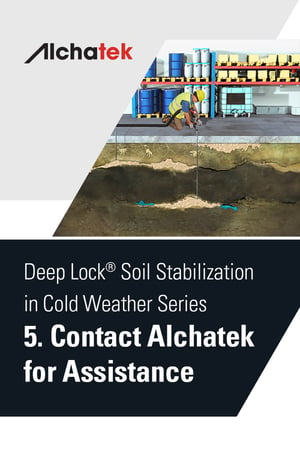 If you're a contractor grappling with deep soil stabilization challenges or looking to expand service offerings, Alchatek offers comprehensive support and training to elevate skills and expand business opportunities. Here's how the Alchatek team can assist you in enhancing your Deep Lock® soil stabilization capabilities:
If you're a contractor grappling with deep soil stabilization challenges or looking to expand service offerings, Alchatek offers comprehensive support and training to elevate skills and expand business opportunities. Here's how the Alchatek team can assist you in enhancing your Deep Lock® soil stabilization capabilities:
Skill Upgrades for Contractors
- If you're currently facing difficulties with deep soil stabilization projects, Alchatek provides the expertise to upgrade your skills and tackle these challenges effectively.
- For slab lifting contractors, incorporating the Deep Lock® process into your service offerings can be a significant step towards diversifying your business and increasing revenue.
Technical Guidance and Support
- Alchatek's technical support team is highly skilled in on-the-job applications of deep soil stabilization techniques.
- The team brings a wealth of experience, having successfully consulted on a wide range of projects.
- On-the-job training is available, offering practical, hands-on learning to ensure you are fully equipped to handle various stabilization scenarios.
Comprehensive Training Programs
- Alchatek offers training programs, which are designed to provide in-depth knowledge and hands-on experience in the latest soil stabilization techniques.
- Training programs are an excellent opportunity for contractors to learn directly from experts and gain valuable insights into the industry’s best practices.
Collaboration with Engineers
- Alchatek assists contractors in working with engineers. This includes providing education and specification assistance to ensure that engineers are well-informed about the Deep Lock® process and its benefits.
- The support team can help bridge the gap between contractors and engineers, facilitating smoother project execution.
Project Design Support
- This service ensures that your deep soil stabilization projects are well-planned, efficient, and effective.
- Alchatek experts can help you design your projects from the ground up, ensuring the best possible outcomes for your clients.
Contact Alchatek Today
If you’re looking to enhance your deep soil stabilization services or need expert assistance, reach out to Alchatek today. With comprehensive support, training, and vast experience, you can confidently tackle any soil stabilization challenge and grow your business.
Call 404-618-0438 or fill out this form to contact Alchatek now!



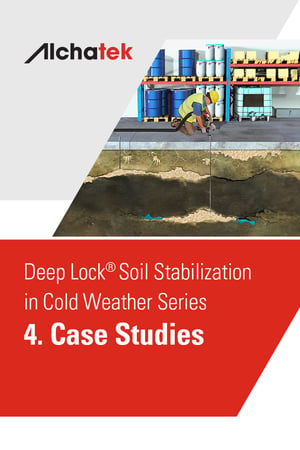 This post features three case studies that highlight the versatility and effectiveness of the Deep Lock® process across a variety of applications.
This post features three case studies that highlight the versatility and effectiveness of the Deep Lock® process across a variety of applications.
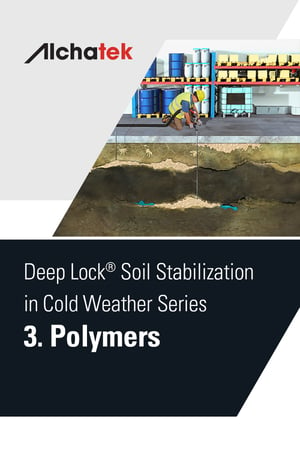 In the world of soil stabilization and concrete leveling, the choice of materials is as important as the technique used. Alchatek's Deep Lock® process utilizes a range of specialized structural polymers, each designed to cater to specific stabilization needs.
In the world of soil stabilization and concrete leveling, the choice of materials is as important as the technique used. Alchatek's Deep Lock® process utilizes a range of specialized structural polymers, each designed to cater to specific stabilization needs.
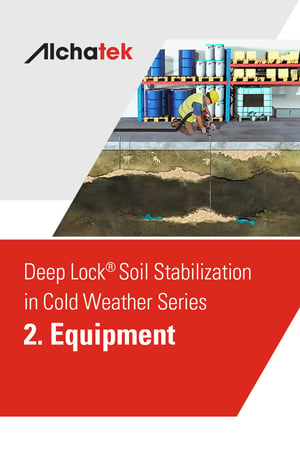 The Deep Lock® process, a robust and effective method for soil stabilization, requires specialized equipment to ensure precision and efficiency. Here's a breakdown of essential equipment for Deep Lock® soil stabilization in cold weather:
The Deep Lock® process, a robust and effective method for soil stabilization, requires specialized equipment to ensure precision and efficiency. Here's a breakdown of essential equipment for Deep Lock® soil stabilization in cold weather:
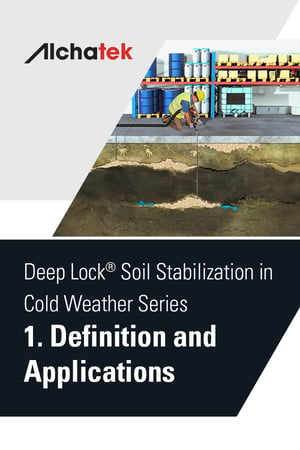 Deep Lock® is a specialized deep soil stabilization process developed by Alchatek. It involves injecting a structural polymer deep into the soil, where it expands and solidifies. This process enhances the stability and strength of the soil, making it an effective solution for various geotechnical challenges. One key feature of Deep Lock® is its ability to stabilize soil below the freeze/thaw line, making it particularly useful in cold weather conditions.
Deep Lock® is a specialized deep soil stabilization process developed by Alchatek. It involves injecting a structural polymer deep into the soil, where it expands and solidifies. This process enhances the stability and strength of the soil, making it an effective solution for various geotechnical challenges. One key feature of Deep Lock® is its ability to stabilize soil below the freeze/thaw line, making it particularly useful in cold weather conditions.
 As a municipal manager or administrator, you’re well aware of the challenges and solutions related to maintaining the structural integrity of infrastructure like bridge approach slabs. The numerous benefits of polyurethane foam, including its cost-effectiveness, quick application time, and long-term durability, make it a compelling choice for bridge approach slab leveling and stabilization.
As a municipal manager or administrator, you’re well aware of the challenges and solutions related to maintaining the structural integrity of infrastructure like bridge approach slabs. The numerous benefits of polyurethane foam, including its cost-effectiveness, quick application time, and long-term durability, make it a compelling choice for bridge approach slab leveling and stabilization.


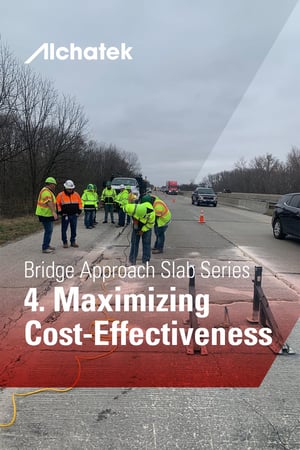 Budget constraints are a perennial concern for infrastructure maintenance operations. Whether it's the upkeep of roads, bridge approach slabs, or other critical components, there is an ever-present need to optimize spending without compromising quality. Administrators and engineers alike are continually searching for cost-effective, long-term solutions that deliver robust performance and minimize future maintenance costs.
Budget constraints are a perennial concern for infrastructure maintenance operations. Whether it's the upkeep of roads, bridge approach slabs, or other critical components, there is an ever-present need to optimize spending without compromising quality. Administrators and engineers alike are continually searching for cost-effective, long-term solutions that deliver robust performance and minimize future maintenance costs.
 One of the most pressing challenges in infrastructure maintenance is managing slab repairs on busy roadways, including bridge approach slabs, streets, and highways. These repairs often lead to unavoidable traffic disruptions, posing operational challenges that can significantly impact the daily commute and local economy. As a result, there's an increasing need for solutions that are not only effective in restoring structural integrity but also quick, thus minimizing the time lanes are closed.
One of the most pressing challenges in infrastructure maintenance is managing slab repairs on busy roadways, including bridge approach slabs, streets, and highways. These repairs often lead to unavoidable traffic disruptions, posing operational challenges that can significantly impact the daily commute and local economy. As a result, there's an increasing need for solutions that are not only effective in restoring structural integrity but also quick, thus minimizing the time lanes are closed.
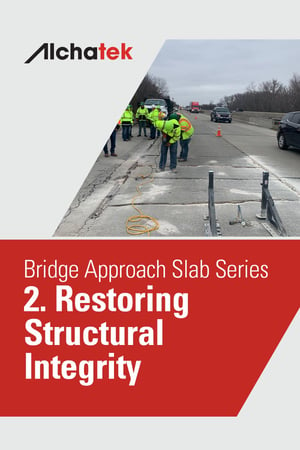 Structural integrity often takes center stage when discussing the engineering behind bridges, leaving the bridge approach slabs in the periphery. Yet, the approach slabs bear significant loads, channel them effectively into the bridge structure, and play a crucial role in maintaining the structural integrity of the entire bridge system. When these slabs sink or become uneven, the ripple effect goes beyond vehicle safety, impacting the structural equilibrium of adjoining infrastructure. Thus, maintaining their integrity becomes a multi-faceted endeavor.
Structural integrity often takes center stage when discussing the engineering behind bridges, leaving the bridge approach slabs in the periphery. Yet, the approach slabs bear significant loads, channel them effectively into the bridge structure, and play a crucial role in maintaining the structural integrity of the entire bridge system. When these slabs sink or become uneven, the ripple effect goes beyond vehicle safety, impacting the structural equilibrium of adjoining infrastructure. Thus, maintaining their integrity becomes a multi-faceted endeavor.
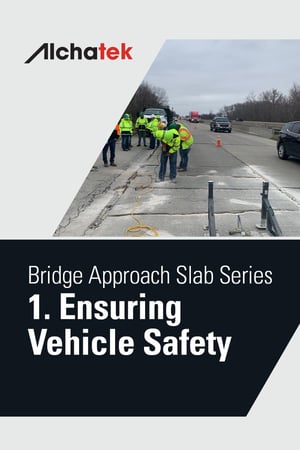 The role of bridge approach slabs in vehicle safety and infrastructure integrity is critical but often underestimated. When these slabs begin to sink, the consequences can be dire, ranging from vehicular damage to potential accidents. Such sinking typically originates from imbalances and instability in the underlying soil. It's not just an issue to be patched; it's about stabilizing the ground itself to ensure long-term durability and safety.
The role of bridge approach slabs in vehicle safety and infrastructure integrity is critical but often underestimated. When these slabs begin to sink, the consequences can be dire, ranging from vehicular damage to potential accidents. Such sinking typically originates from imbalances and instability in the underlying soil. It's not just an issue to be patched; it's about stabilizing the ground itself to ensure long-term durability and safety.